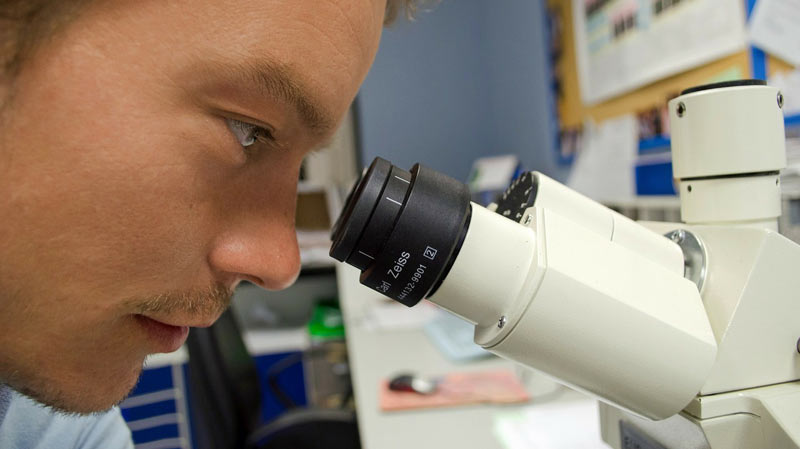Need Microscopes? Select A Verified Supplier!

Microscopes are instruments utilized to study things that may be difficult to see with the naked eye. You may come across different types of microscopes like optical, electron, and x-ray microscopes. While the first one is most commonly used by researchers and students, the other two have been able to support several scientific explorations because of their ability to view even smaller objects. An electron microscope magnifies a specimen millions of times, but it requires intensive preparation for viewing each sample, and even its method of operation is more elaborate than optical microscopes. This makes it difficult for researchers to use an electron microscope, especially when the samples are of a biological nature.
Most microscopic research is performed using a compound optical or binocular compound microscope. They can magnify a specimen up to one thousand times the actual image. This is achieved by using a series of adjustable objective lenses along with an eyepiece. To use the microscope, you take a sample and place it in the area called the stage, which is right under the active objective lens. The sample is lit up from a light source underneath the stage. As you try to view the sample through the eyepiece, the highly calibrated lenses, magnify the image and help you study the magnified sample.
Electron microscopes help us examine cells, large molecules, and anything too small for an optical microscope to magnify for you. The functioning of the device relies on a beam of electrons to ascertain the microscopic structure of the specimen you are studying. One of the most basic forms of the electron microscope is the transmission microscope, which sends the beam of electrons right through the specimen, which is then magnified and directed to a photographic plate or device. This helps you view the magnified image of the specimen. Other electron microscopes that you may come across are reflection, scanning, and scanning transmission microscopes.
There are times when the specimen being studied is stained or treated with different substances to enhance the quality of the image produced by the microscope. Even though there is a possibility that this process can alter the specimen being studies, it is considered to be a necessary step in some cases and may even offer certain advantages.
Also read: Home Theatre Buying Guide
Microscopes used in Investigation
A lot of scientists intrigued by the nature of living organisms tend to use a microscope for their work and to fulfil their curiosities. The device is also widely used in forensic science for the examination and study of blood, dust, fibres, and trace materials, which can contribute towards the investigation of a crime scene and help in the prosecution of criminals. Environmental scientists study a variety of specimens like soil and water under the microscope. Geneticists use a microscope to study chromosomes, understand different patterns, and identify defects. Microscopes are also used in engineering by material scientists who study the components of structures and materials used in buildings, bridges, and dams to check for quality and ensure safety.
Microscopes used in Education
Educational institutions use microscopes to help children learn about microorganisms and teach them about the structure of things which are invisible to the naked eye. A compound microscope can help you see individual cells of different organisms like plants, animals, bacteria, and yeast. Students have a better understanding of life on Earth as they study them under the microscope. Additionally, microscopes are excellent examples of how light reflect and refracts before it reaches the eye.
If you are planning to buy a Research microscope, then electron microscopes can be useful. Scientists, as well as students, use these at universities and research labs all over the globe. These microscopes can handle some of the most demanding applications in life science research since these applications require high magnification as well as high resolution. It is common to see specially designed microscopy cameras as well as imaging software to be combined with research microscope systems to support sample analysis.
Microscope users come from different walks of life and may have a lot of experience in using microscopes or no experience at all. This is the reason why an easy to use microscope is better suited for places where it will be used by a wide range of users.
It is best to rely on a verified supplier for your requirements of microscope systems. This ensures quality, and you will have access to qualified personnel to help you understand the working of the microscope if required.
Remember to carefully research different microscopes and keep your requirements in mind before you choose one.
Thanks Happy Reading!



